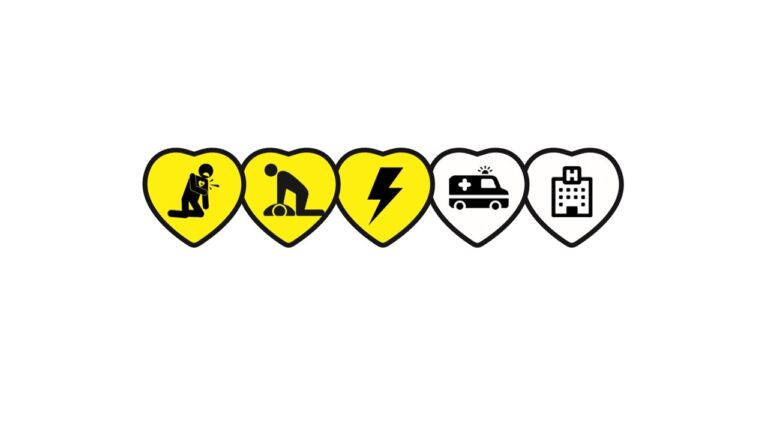It's the first 3 of the chain that counts!
The Swiss Resuscitation Council (SRC) recommends an immediate start with chest compressions and immediate defibrillation within 3 to 5 minutes of the onset of circulatory arrest after alerting the emergency services.
- Recognition of circulatory arrest and alerting the emergency services (by those present).
- Early resuscitation measures (by bystanders and/or first responders).
- Early defibrillation (by first responders and, thanks to publicly accessible defibrillators, by people present).
- Advanced resuscitation measures (by the rescue service).
- Interdisciplinary care after cardiovascular arrest (in hospital).
One thing is certain: the better the links in the chain of survival interlock, the higher the chances of survival for the people affected.
The first three links in the chain of survival should ideally be able to be carried out by anyone present, while the fourth and fifth links are carried out by professionals with the appropriate qualifications and equipment. Since the rescue service needs a certain amount of time to arrive on the scene, a time window of 3 to 5 minutes usually cannot be adhered to.
This illustrates how much help is needed from those who are present or in the foreseeable vicinity in the event of circulatory arrest.
Definition:
In contrast to the term rescue chain, the chain of survival refers exclusively to the prehospital measures in sudden circulatory arrest, including initial defibrillation.
